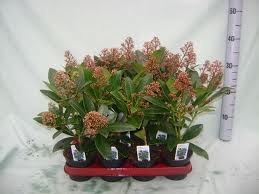Peperomia
Pot Cultivation
These plants may be grown in pots, pans, or hanging baskets indoors in cool climates or outdoors in mild. They need a minimum winter temperature of 55 degrees. The best soil mixture for them is equal parts of peat moss, loam and sand and they prefer a partially shaded location. Repotting should be done in March. The pots need to have good drainage. The old crocks and as much of the old soil as possible should be removed without damaging the roots. They should then be set in slightly larger pots, just large enough to hold the roots without cramping them. No water should be given until the soil is almost dry, and then it's thoroughly saturated. Repeat this method of watering throughout the year, except, during the winter, the periods between watering should be longer. P. rotundifolia, P. brevipes and others that have climbing growth are great for planting in hanging baskets. First, the baskets should be lined with sphagnum moss and then filled with compost. Small plants, or rooted cuttings, are planted at the top of the baskets, 3 or so inches apart. Hang the baskets in shady spots in the greenhouse and water in the way described above.Propagation
These plants can be divided at potting time. They are removed and separated into smaller pieces that have a few roots attached. Leaf or stem cuttings can also be taken in the spring or summer. Remove the lower leaves of the shoots and make a cut below the bottom node (joint). Then lay them on a bench for an hour or two to allow a protective corky skin to form over the cuts. Insert the stem cuttings in a propagating case with a bottom heat of 70-75 degrees. Don't close the top completely, since the plants are semi-succulent in nature they do not give off water very fast. When enough roots have formed they can be potted in 3-inch pots or in hanging baskets. Seeds may also be sown. |
P. rubella |
VARIETIES
- P. acuminata;
- P. capreata (Emerald Ripples);
- P. clusiaefolia;
- P. crassifolia;
- P. griseo-argentea;
- P hederaefolia;
- P. incana;
- P. rotundifolia;
- P. obtusifolia variegata (Variegated Baby Rubber Plant);
- P. rubella;
- P. Sandersii;
- P. Sandersii variety argyreia;
- P. velutina;
- P. maculosa;
- P. glabella (Wax Privet) & its variety variegata.




